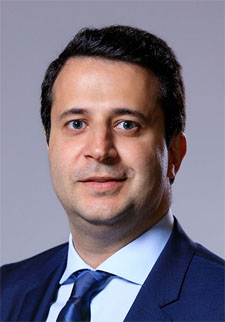TAC has developed guidelines for defining and measuring urban traffic congestion to provide guidance on quantifying and reporting traffic congestion and promote methodological consistency among Canada’s urban areas. This webinar covered all aspects of congestion measurement, including definition, indices, data sources, technologies, visualization techniques, and a decision support process. Participants learned about recommended practices and how to adapt application guidelines in their jurisdictions.
Agenda
- Background
- Definition of traffic congestion
- Congestion measures and selection criteria
- Data sources and their applicability
- Data acquisition and processing
- Congestion visualization techniques and their applicability
- Decision support process
Learning Objectives
- Define traffic congestion
- Determine the best set of congestion measures for the target analysis
- Select the most applicable technology and data sources for the target analysis
- Process the collected data and estimate traffic congestion
- Select the best suite of visualization techniques for the target analysis
Target Audience
- Transportation professionals with all levels of experience
Presenter

Pedram Izadpanah, Ph.D., P.Eng., Partner, Senior Project Manager, CIMA+
Pedram has more than 14 years of experience in traffic and transportation engineering. He has developed new methodologies for measurement and presentation of travel time and traffic conditions using various sources of data, including data from commercial vendors (TomTom and INRIX), inductive loop detectors, Bluetooth detectors, and GPS equipped probe vehicles. Dr. Izadpanah has taught traffic engineering courses at the University of Waterloo and McMaster University.

Soroush Salek, Ph.D., P.Eng., Associate Partner, Project Manager, CIMA+
Soroush has more than 12 years of academic and consulting experience in different areas of transportation engineering. He was involved in several transportation modeling studies at both operational and planning levels, and state-of-the-art projects dealing with statistical analysis of big datasets including data assessment, outlier detection, and statistical inference. He has conducted extensive research on estimation and prediction of traffic state on roadways using data obtained from both conventional and cutting-edge technologies. Dr. Salek is the winner of CITE 2014 Dr. Van Aerde Memorial Award and a member of the Transportation Research Board Travel Time and Reliability Committee.

Reza Omrani, Ph.D., P.Eng., Associate Partner, Project Manager, CIMA+
Reza has 10 years of academic and consulting experience in the field of ITS, traffic operations, and roadway safety. His expertise includes new and emerging technologies for transportation data collection and analysis, as well as the development of traffic policies and updating traffic manuals. He has been involved in updating the Ontario Traffic Manual (OTM) Book 11 and 12A, as well the 6th Edition of the Manual of Uniform Traffic Devices for Canada (MUTCDC). Currently, Reza is CIMA’s Deputy Project Manager for MTO’s 2016 Travel Time Study, which requires traffic data collection and analysis for highways and arterials within GTA from emerging wireless technologies. He has presented and published several papers in well-known conferences and journals.
The Transportation Association of Canada (TAC) makes no representations or warranties about the accuracy or suitability of any information presented in the webinars and related materials (such as handouts, presentation documents and recordings); all such content is provided to TAC’s members and webinar registrants on an ‘as is’ basis. TAC is not liable for any information provided by instructors and presenters of these webinars. TAC hereby disclaims all liability for any claims, losses, or damages in connection with use or application of these materials. TAC does not guarantee, warrant, or endorse the products or services of any firm, organization, or person. The information contained in these webinars and related materials is not intended to constitute legal advice or the rendering of legal, consulting, or other professional services of any kind. Users of these materials should not in any manner rely upon or construe the information or resource materials in these materials as legal, or other professional advice and should not act or fail to act based upon the information in these materials without seeking the services of a competent legal or other professional.

